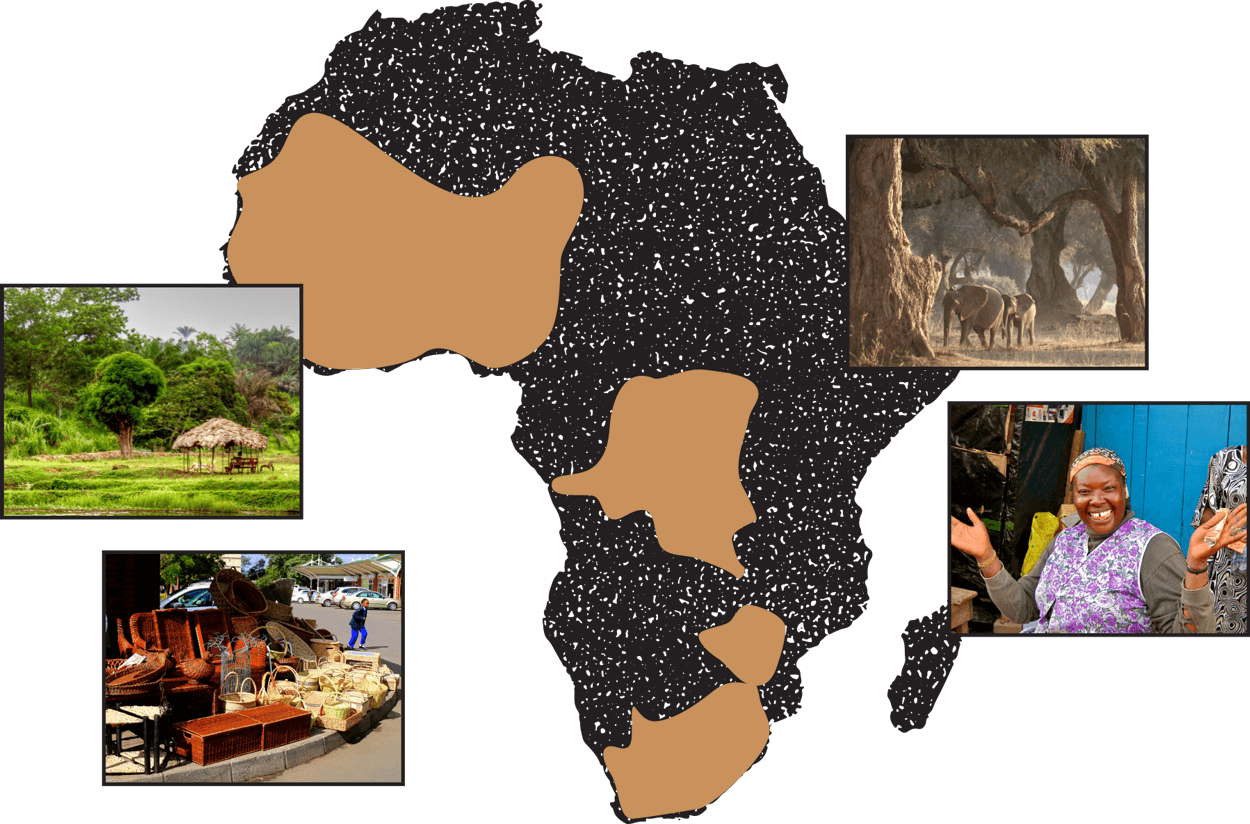The community behind the wood
The community behind the wood
All our wood is sourced from naturally fallen trees as a way to minimize our environmental impact. Although other high-end woods are available on request, most of our wood comes from within the African continent, including: Iroko (West Africa), Wenge (Congo), Yellow Wood (SA), Teak (Zimbabwe), Red Gum (SA).
Within the Zimbabwean borders, we source most of our wood from Mutare, Nyanga and the Honde Valley. Mutare is the fourth largest city in Zimbabwe. Nyanga lies roughly 115 kilometres away by road and the Honde Valley is about 130
kilometres from Mutare. These areas are largely farming and mining communities whose populations are predominantly Shona; many of whom speak the Manyika dialect and are locally known as Samanyikas.
In South Africa, most of the wood we source comes from Knysna, which is said to be named after the Khoisan word meaning roughly “fern leaves”. Knysna forms part of the scenic Garden Route and its neighbouring town, Plettenberg Bay,
lies just 33 kilometres away. Predominantly a tourist town these days, Knysna was once better known for its timber industry, pioneered by George Parkes (founder of the Knysna Forest Company) who saw the opportunity to use the hardwoods of the Knysna Forest for export to elsewhere in the country.

In Congo, we source most of our wood from the Congo Basin. As the second largest rainforest in the world, the Congo Basin is said to support an estimated 40 million people who survive on traditional livelihoods and depend on these woodlands. Nearly 150 distinct ethnic groups (often referred to as Congo Pygmies) exist within the Congo; one of the most commonly known being the Ba’Aka people who lead an ancient hunter-gatherer sort of lifestyle.
We also source wood from the western part Nigeria where the Yoruba people predominantly live in traditional compounds. Traditional Yoruba villages are made up of rectangular courtyards, each with an open or a partly enclosed porch where the women weave and cook. Today, the huts are largely being replaced by modern, cement block bungalows with iron roofs and have access to basic services including running water, electricity, and paved roads.
